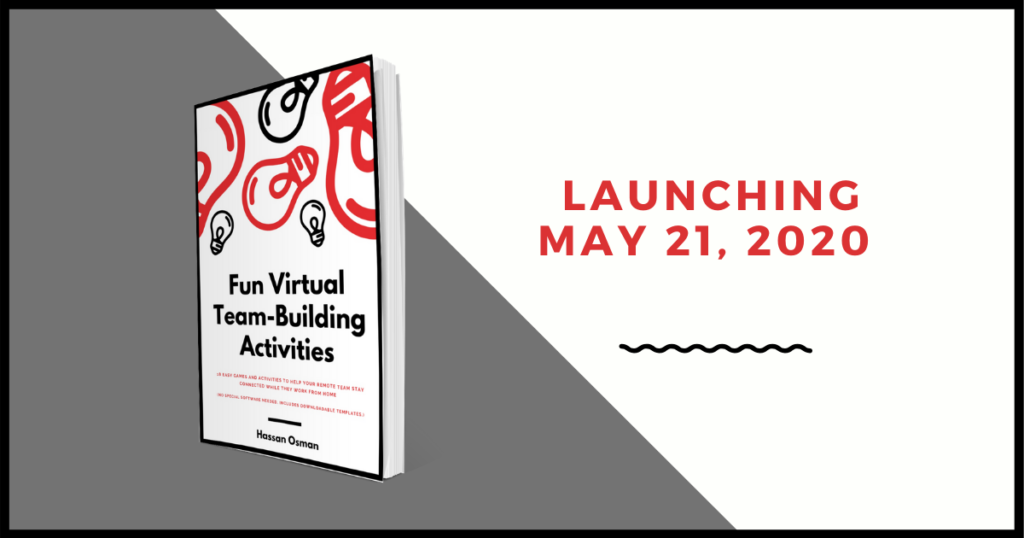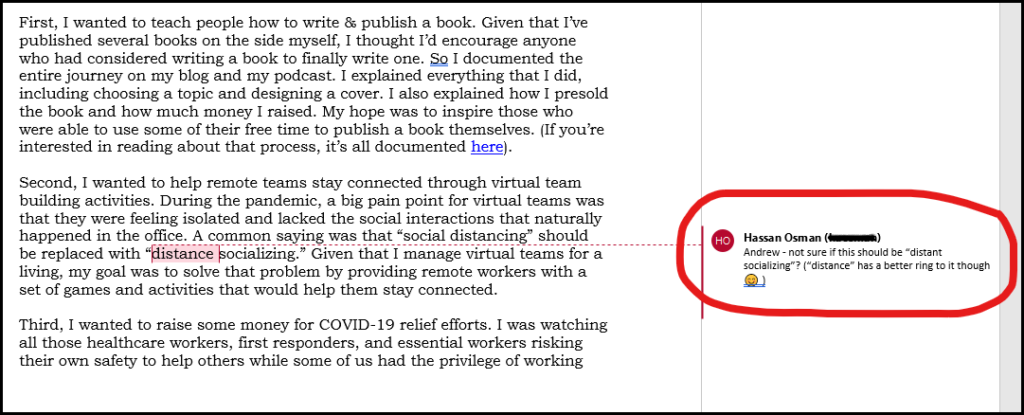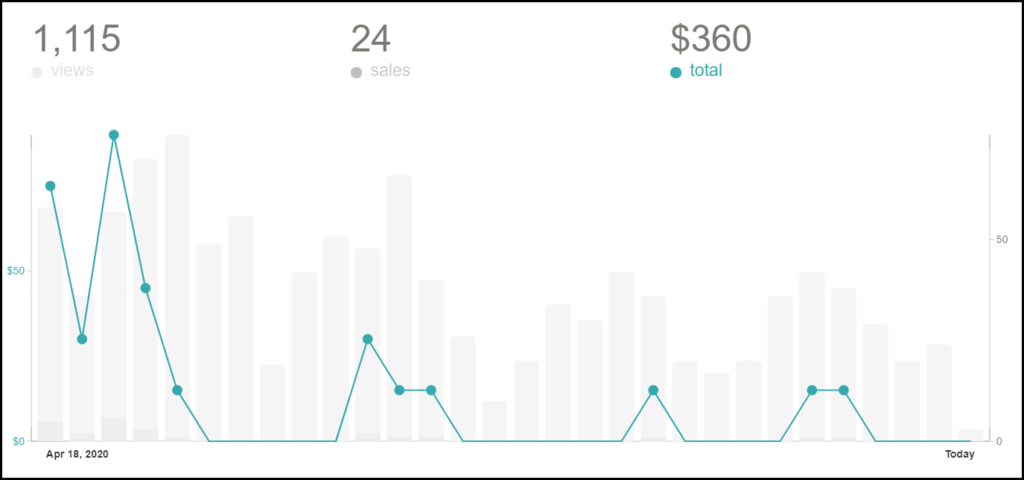
Note: This is part 7 of a multi-part series about writing a book and donating profits to COVID-19 efforts. Click here to read the other parts.
A lot has happened between my last post and this one.
I finished writing the book, I edited it, I designed a new cover, and I moved the launch date (twice).
I also made a few decisions to help accelerate my publication date.
In summary, the book is now officially going to launch on Thursday, May 21, 2020, and I’m quite excited about it. I’m actually taking a day off of work on that day to focus on it.
There is a lot to cover in this post, so instead of going through every decision in detail, I’ll cover each at a high level.
Finishing Writing the Book
In Part 6, I explained how I outlined the book and started writing it. Since then, I just plowed through and got it done. To speed up the process, I deleted a couple of chapters. They were going to take a bit of time, and I didn’t think they added much value.
Don’t fear doing the same with your own book. Cutting out anything extraneous will not only save you time, but it will make your book a better one. People like shorter books.
Pushing out the Release Date
After finishing the draft, I had a few more steps to do.
First, I needed to edit it. Second, I needed to find and hire an interior layout designer to help me create a professional look for the interior pages (and potentially a cover as well if I could get a good deal). Third, I wanted to start reaching out to thought leaders for testimonials.
I also had to prepare the sales page, landing pages, and emails for comms to announce the book.
My initial release date was set to May 18, 2020. However, with everything I had to do, I knew there was no way I could make that date, so I had to push it out.
The challenge was that I already took pre-orders from people with that date in mind, and even though I was clear on the Gumroad sales page that the date might move, I still didn’t feel very comfortable pushing it out.
So I moved the date by an additional month and changed the presale date from May 18 to June 15.
This was very easy to do in Gumroad (took 20 seconds). Here’s a short video that shows you how.
Although I knew that I wasn’t going to need an additional month and that the book was probably going to be published earlier, I didn’t want to take another chance and keep moving the date out on people.
I also sent an email to all customers who pre-bought the book to explain that I’m behind on publishing.
As far as I know, I don’t think anyone canceled their presale because of that (not sure because I don’t know if Gumroad would notify me of that).
Sending the book for Editing
The next step was to send the book for professional editing. I work with Andrew Kroeger from Barton Hill Books (his company is amazing – check them out).
I usually select the “heavy copyediting” service which costs me $0.025/ word.
Before I sent the manuscript to Andrew, I asked him how much time he would need to edit the book, and he said he needed around 10 days.
Even though that was reasonable, I explained that that was under a tight deadline and I already pushed my release date. Given that I’ve worked with him on several books in the past, he kindly moved a few things around and said he could get the edit done in 4 days instead, which was awesome.
In preparation for sending the manuscript, I added some comments in a few sections of the book where I wanted some additional help from him.
Here’s an example.

I highly recommend you do that as well so that you can guide your editor on where you think they should pay special attention.
Reaching out to Thought Leaders
While I was waiting for the book to be edited, I started reaching out to thought leaders in the “remote work” field to review my book. The idea was that if they liked it, they would provide me with a blurb that I could use for social proof and marketing. In exchange, I could help promote their website or business.
For example, a few authors, leaders and entrepreneurs that I reached out to and already responded with some kind testimonials include:
- Rohit Bhargava, Author of the Non-Obvious Guide To Virtual Meetings & Remote Work and Founder of the Non-Obvious Guide Series
- Tara Powers, Author of Virtual Teams for Dummies and Working From Home for Dummies
- Patrick Linton, Founder & CEO of Bolton Remote
- Collin Waldoch, CEO and Co-founder of Water Cooler Trivia
- Howard B. Esbin, PhD., Co-Creator of Prelude Suite™
- Stefan Palios, Remote entrepreneur, founder, and publisher of Remotely Inclined
- Pilar Orti, Director of Virtual not Distant & Author of Online Meetings that Matter
- Marissa Goldberg, Founder of Remote Work Prep
(I’m still waiting on a few more, so this is not an exhaustive list)
Deciding against Hiring a Designer
As I started researching the market for an interior layout designer, I realized that this was going to take me a lot more time than I expected (a minimum of 2 weeks).
In addition, the service was going to be a lot more expensive than I had thought. I was looking at a budget of at least $600 for a good job.
So I made another decision.
I decided against hiring a professional interior designer. It was just not worth it at this point.
$600 is money that can buy a lot of food for essential workers or protective equipment for healthcare professionals.
Plus I convinced myself that by doing this, I’d help other authors realize that they can still sell some copies of their book without spending a lot of money on it.
However, this meant that I was also not getting a new design for my book cover and that I had to design one myself.
Designing a New Cover
In Part 5, I showed you how I created a cover in 90 seconds using Canva. I designed that first version as a “placeholder” so I can start preselling the book.
The intent was not to use it as the final design, but now, I had to consider keeping it because I was no longer hiring someone.
I thought I’d spend some time working on another potential design on Canva (also for free) to figure out whether I’d keep the same old design or pick a new one.
I saw a template I liked and created another cover. I then showed both designs to my followers and email subscribers and asked them to vote on one.
Option A was the old cover, and Option B was the new one.
Option B won by far, so that was the one I settled on.
By the way, I got a lot of strong opinions on this. Some people didn’t really like either design. Some suggested I combine designs. And some were questioning why I used those colors.
Although I appreciated everyone’s feedback, and I realize that I could get a much better design if I hire someone professionally, I also know that I have to move forward.
You can easily get stuck in analysis paralysis with those types of things. My suggestion is not to overthink them and just make a decision based on general feedback and gut feel.
You can always change the cover (and even interior layout) after publication.
Getting Feedback after Editing
A few days later, I got my book back from editing. Andrew did a fantastic job and cleaned up some important sections of the book.
One important takeaway was that I had to modify the title and subtitle a bit (e.g., hyphenate “Team-Building”). Here’s a short video from Twitter that shows you how some of those edits look like.
The total word count was 9,150 words, so that meant that at $0.025/ word per word, my cost was going to be $228.75
However, Andrew gave me a 10% discount because he was a bit late with the delivery (he mistakenly said he would get the book back to me by Tuesday COB, but actually meant Wednesday). He still sent it by Tuesday late evening, but kindly offered the discount for the inconvenience.
So my total cost spent on editing was: $205.87
Announcing a New Launch Date
Given that I was not going to worry about an interior layout anymore, and that I got the editing back early, I felt comfortable moving up the launch date.
The only thing that was outstanding for me was creating the downloadable templates and spreadsheets associated with the book.
Under each activity, I have a resources section to help readers save time by downloading “How to Play” slides, as well as sample games and spreadsheets (that are ready to use for teams).
There was a lot of work to be done on that front, but I knew I could get all that accomplished over the weekend if I put my mind to it (update: everything is done now 😉 )
So I put a stake in the ground and shot for Thursday, May 21, 2020, as the official launch date for the book. I changed the release date again on Gumroad, and I started announcing the date on my emails and on social media.
I also increased the price of my book from $15 (the presale price) to $25 (the launch price).
I did that because I wanted to maximize donations from any new sales I make between now and Thursday. I also wanted to “reward” folks who pre-bought the book earlier and invested in the project.
Prsesale Status
So far, I made 24 sales and a total of $360 in revenue.

This is not a lot, but it is expected because people don’t usually invest in presales. In general, most readers want instant gratification or want to wait to learn more about the book when it’s out before they buy it (also, my sales page is almost non-existent at this point, so it’s not too convincing).
In the meantime, I’ll continue to grind to get prepared for the launch.
My next post will probably be announcing the book, so stay tuned!
If you’d like to stay updated, subscribe to get email updates here. You can also follow me on Twitter.